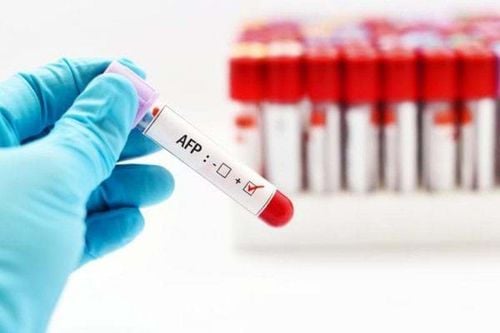This is an automatically translated article.
Posted by TS. Doctor Ta Que Phuong - Department of Gastroenterology - Endoscopy, Vinmec Times City International Hospital.Bloody stool is a condition in which blood is passed out, the manifestation of blood can be: on the toilet paper after wiping, in the toilet after you go to the toilet, on the surface or mixed in the stool.... In some cases, bloody stools will be black and look more like coffee grounds than blood red. Stool that looks like tar is usually caused by bleeding in the upper part of the digestive tract.
1. What causes bloody stools?
The two most common causes are usually not serious:
Hemorrhoids
Anal fissure
Sometimes, bloody stools are very serious. They can be a sign of cancer or other problems in the digestive system.
2. Monitor for other accompanying symptoms?

These symptoms can indicate causes and severity:
Itching or pain in the anus
● A tearing or burning sensation during bowel movements
● Fever, weight loss, and heavy sweating Night time
Diarrhea
Feeling like you want to have a bowel movement, but unable to pass
● Abdominal pain
Black or dark red stools
● Change in bowel habits, and a change in stools that are hard or hard soft
Bleeding that goes on for a long time or recurs many times
3.Should I see a doctor when I have blood in my stools?
You should see a doctor if you have blood in your stools. Most cases are not serious.
4. What tests should be done?

The doctor will decide what tests to do based on the age, other symptoms and the condition of the individual patient.
Here are the most common tests doctors use to find the cause of bloody stools:
Rectal exam : Look outside the anus then use your finger to examine the inside of the anus rectal and rectal.
Analoscopy: A small tube is inserted into your anus. The tube passes a few centimeters into the rectum, allowing the doctor to see inside the anal canal.
● Sigmoidoscopy or colonoscopy: A flexible endoscope is used to pass through the anus into the rectum or possibly up the entire colon. The tube has a camera attached to it that can see the inside of your colon. During the endoscopy, the doctor can also take a tissue sample for histopathological examination if an abnormal lesion is detected: such as inflammation, ulcer, polyp or tumor...
5. How to treat bloody stools?
Treatment depends on the cause of bloody stools. In some cases, treatments may include:
Fiber supplements and stool softeners
Soak the anus in warm water several times a day for about 15 minutes
Apply topical medication inside the anus. They help relieve pain, itching and swelling
● Medicines for digestive system diseases
6. Can blood in the stool be prevented?

If you have hemorrhoids, you can reduce the risk of having bloody stools again by drinking lots of water and eating more fiber, avoiding hot spicy foods, alcohol. Fiber is common in fruits, vegetables, and breakfast cereals. You also need to prevent constipation.
7. What if a child has bloody stools?
In children and infants, bloody stools can be a symptom of:
● Bleeding in the anus (anal fissure) with heavy or difficult bowel movements.
Difficulty digesting milk or soy.
Viral or bacterial infection or food poisoning.
● Diseases such as intussusception, gastrointestinal tumors.
● Food and medicine that look like blood but are not: iron pills, bismuth, chocolate...
If you notice blood in your baby's diaper or stool, take your child to the doctor.
Vinmec International General Hospital is one of the hospitals that not only ensures professional quality with a team of leading medical doctors, a system of modern equipment and technology. The hospital provides comprehensive and professional medical examination, consultation and treatment services, with a civilized, polite, safe and sterile medical examination and treatment space. Customers when choosing to perform tests here can be completely assured of the accuracy of test results.
Please dial HOTLINE for more information or register for an appointment HERE. Download MyVinmec app to make appointments faster and to manage your bookings easily.
Articles refer to the source: update.com














